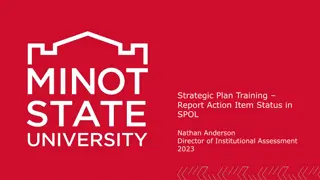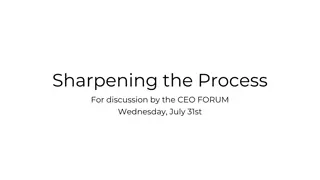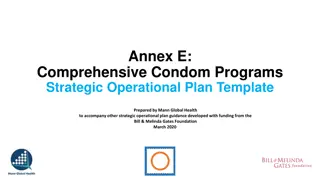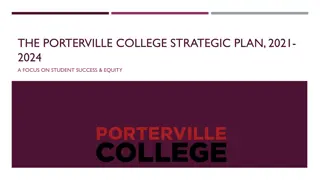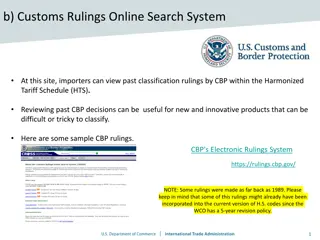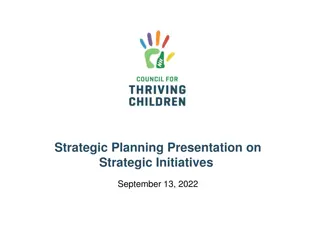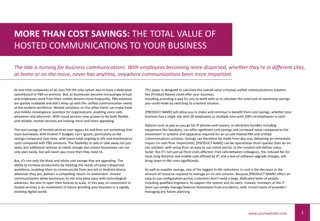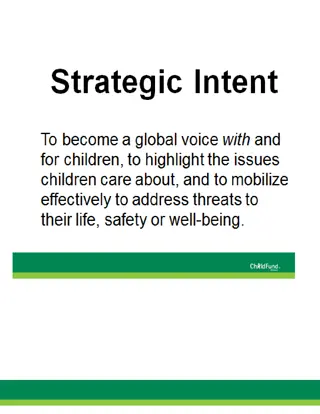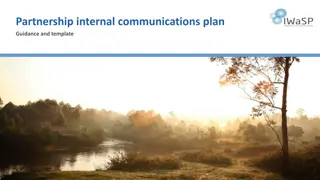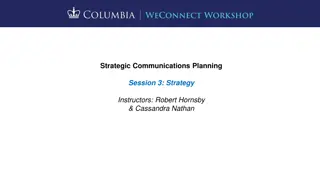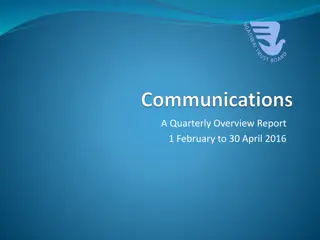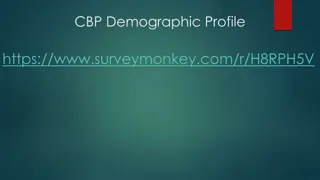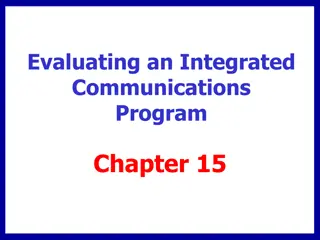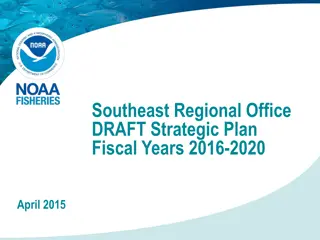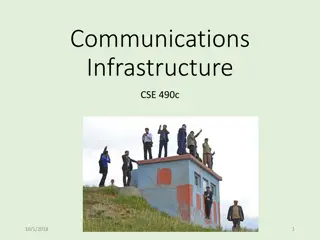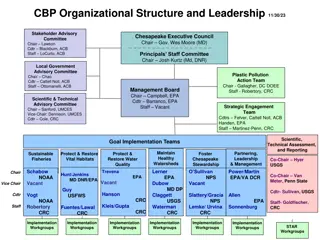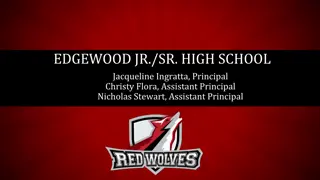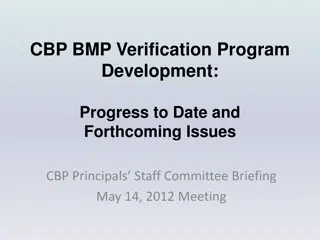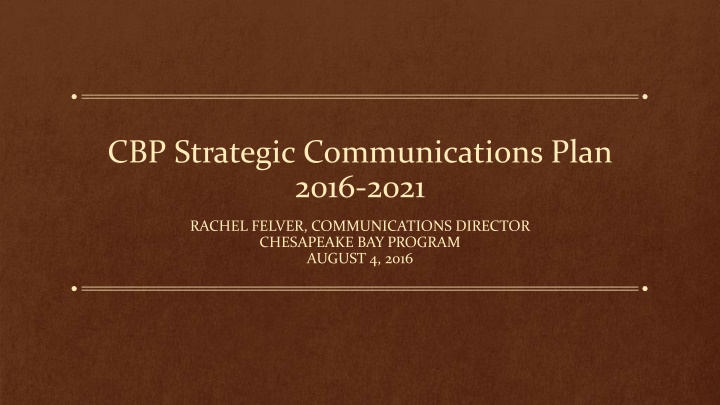
Chesapeake Bay Program Strategic Communications Plan 2016-2021 Overview
Explore the comprehensive Chesapeake Bay Program Strategic Communications Plan 2016-2021, covering research findings, goals, recommendations, mission, vision statements, defined terms, and target audiences. Get insights into the intent of the plan and the action plan of the CBP Communications Team. Discover the mission to support policy, science, and data communication and engage stakeholders in the protection and restoration of the Chesapeake Bay.
Download Presentation

Please find below an Image/Link to download the presentation.
The content on the website is provided AS IS for your information and personal use only. It may not be sold, licensed, or shared on other websites without obtaining consent from the author. If you encounter any issues during the download, it is possible that the publisher has removed the file from their server.
You are allowed to download the files provided on this website for personal or commercial use, subject to the condition that they are used lawfully. All files are the property of their respective owners.
The content on the website is provided AS IS for your information and personal use only. It may not be sold, licensed, or shared on other websites without obtaining consent from the author.
E N D
Presentation Transcript
CBP Strategic Communications Plan 2016-2021 RACHEL FELVER, COMMUNICATIONS DIRECTOR CHESAPEAKE BAY PROGRAM AUGUST 4, 2016
Plan Status It s finished! It s being reviewed! Our ask . Please review and provide edits within two weeks of receiving plan.
Research and Findings Three focus groups 16 one-on-one interviews Online survey Internal communications audit
What is the intent of this plan? Goals and Recommendations CBP Communications Team Action Plan
Definition of Terms Chesapeake Bay Program Chesapeake Bay Program partners Chesapeake Bay Program partnership
Mission and Vision Statements Mission Our mission is to communicate and support the policy, science and data of the Chesapeake Bay Program and its partners through media outreach, web- and print based products, high-quality multimedia, an established and consistent brand, targeted messaging, and collaboration and engagement with stakeholders around the watershed.
Mission and Vision Statements VISION Through the communications of the Chesapeake Bay Program and its partners, the public will be engaged, educated and inspired about the protection and restoration of the Chesapeake Bay and its waterways.
Audiences Elected and appointed officials at the federal, state and local levels. Non-governmental organizations that focus on Chesapeake Bay restoration (e.g. Alliance for the Chesapeake Bay, Chesapeake Bay Trust, Chesapeake Funders Network). Academic and research partners (e.g. University of Maryland Center for Environmental Science, Virginia Institute of Marine Science). Chesapeake Bay Program partners Goal Implementation Team members Advisory Committees Workgroup members Communicators Media Federal, state, local, academic and nonprofit communications professionals Interested public Watchdog organizations nonprofit organizations that monitor the progress of the Chesapeake Bay watershed restoration and protection and/or participate in clean- up efforts (e.g. Riverkeepers associations).
SWOT Analysis STRENGTHS WEAKNESSES CBP is the authoritative source for science, data, policy and analytics for the Chesapeake Bay watershed. CBP Communications Team, while small, is dedicated, strong and educated. Possess highly-regarded website. CBP Communications Team has access to a wealth of resources, namely respected experts. Adept at communicating to internal CBP partners. Skilled at sharing content and data across our networks. OPPORTUNITIES Outreach to new audiences (local governments, elected officials, minority stakeholders, etc.) Collaboration past our silos (cross-GIT, workgroups, etc.) Work to become more strategic across communications. Strengthen relationships with our partners (e.g. focus on Communications Workgroup). Develop a recognizable brand. Small staff. Limited funding. Size of watershed large area to represent and multiple audiences to communicate with. Lack of consistent brand. CBP partners not engaged to collaborate on communications; lack of strategic aspects to communications. THREATS Funding impacts. Competition from other organizations. Communications barriers that make program inaccessible to the public (e.g. federal government restrictions on certain types of messaging). Difficult to connect with audiences removed from the Chesapeake Bay. Competing interests among our partners. Difficult to communicate science and data for general public understanding.
Goals and Recommendations Goal #1: Enhance and strengthen internal communications across the Chesapeake Bay Program.
Goals and Recommendations Goal #2: Increase outreach efforts that prioritize engagement with local governments, local elected officials and minority stakeholders to communicate the work of the Chesapeake Bay Program, its partners and the importance of protecting/restoring the Chesapeake Bay watershed.
Goals and Recommendations Goal #3: Expand knowledge of the work of the Chesapeake Bay Program, its partners and the importance of protecting/restoring the Chesapeake Bay watershed.
Measuring Success CBP Communications Team Action Plan 6 month review with Communications Workgroup Annual review with Management Board
Questions? Rachel Felver, Communications Director Chesapeake Bay Program, Alliance for the Chesapeake Bay rfelver@chesapeakebay.net (410) 267-5740

